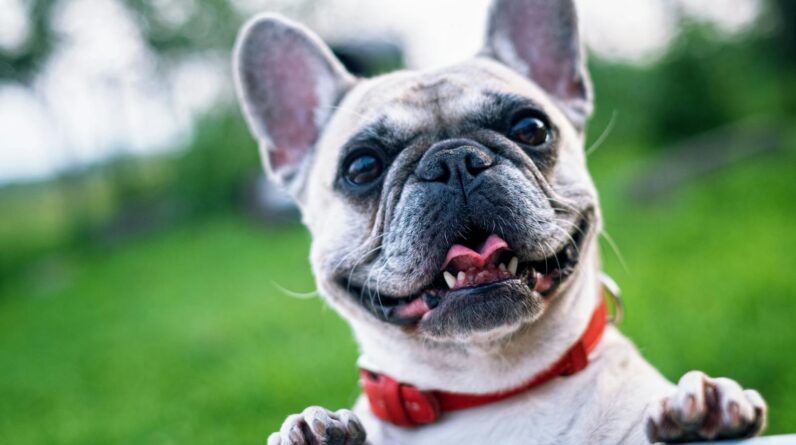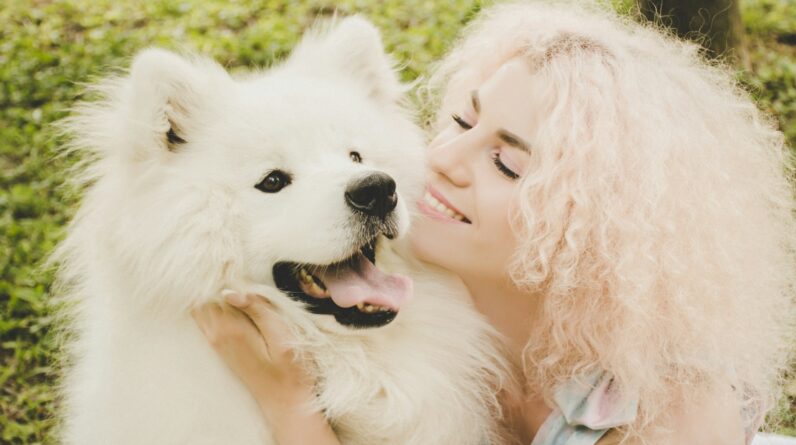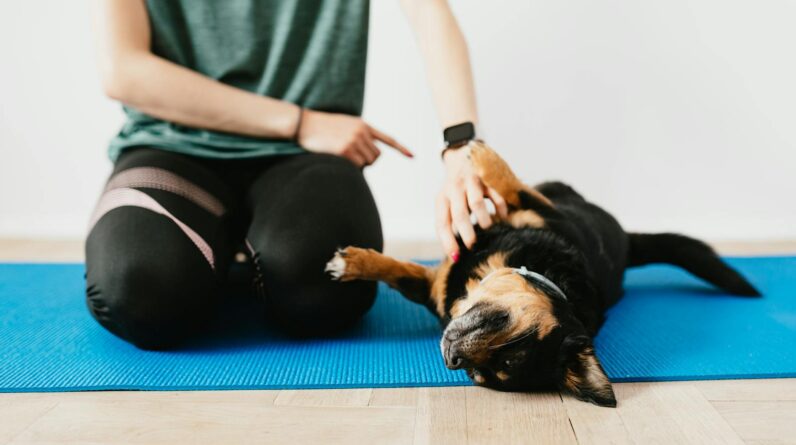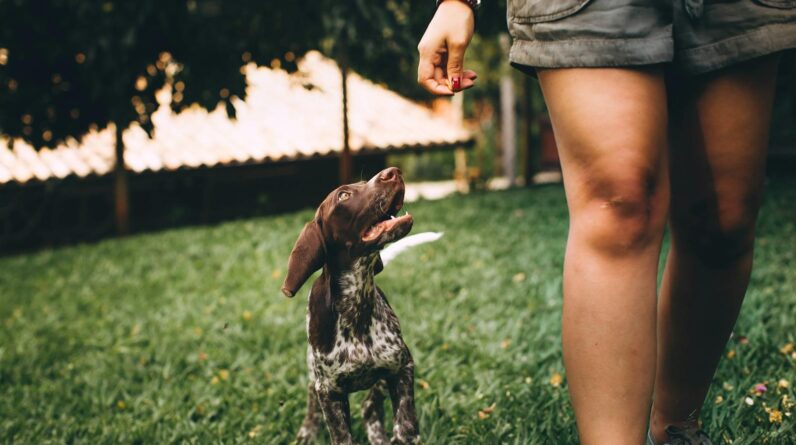
When Should You Start Worrying About Your Dog’s Weight?
Hey there, dog lovers! Let’s chat about something super important today – your furry friend’s weight. Just like us, dogs can get a bit too chubby or way too skinny. So, when should you start to worry about your dog’s weight? Keep reading, and we’ll talk all about it.
Is Your Doggo Looking Extra Fluffy?
First things first, pups can get overweight. You might think a bit of extra fluff is cute, but it can be bad news for their health. If your dog looks rounder than a football or is panting a lot after a little walk, it’s time to pay attention.
Spotting a Tubby Pup
How can you tell if your pooch has put on too many pounds? Try this trick: run your hands along their sides. You should be able to feel their ribs without pushing too hard. Also, they should have a waist – that means their body gets thinner after the ribcage. If you’re not seeing that waist or can’t find those ribs, your dog might be overweight.
Or Maybe Too Skinny?
Now, what if it’s the opposite problem – your doggie is super skinny? If you can see their ribs, spine, and all the bones way too easily, that’s a red flag. Dogs should have some meat on their bodies. If they’re looking like a bony alley cat, something isn’t right.
When Thin is Too Thin
Being underweight could mean your dog isn’t eating enough or maybe there’s some health problem you don’t know about. Either way, giving them the once-over and chatting with your vet is a smart move.
Feeding Time: Too Much or Not Enough?
So, what’s up with your dog’s food? Portion sizes are super important. That scoop of kibble might be more than they need, or maybe treats are happening more often than they should. On the other hand, not enough food or the wrong kind can make them skinny. Read the back of their food bag to see how much they should eat, or ask your vet for some advice.
What’s the Right Food, Anyway?
And talking about what to feed them – not all dog food is the same. Some are like junk food for dogs, while others are packed with the good stuff they need. Sometimes, it’s worth paying a few more bucks for better-quality grub that keeps your dog in top shape.
Playtime and Exercise
Remember that just like us, dogs need to move! Running around, playing fetch, going for walks – these are all ways dogs have fun and keep their weight in check. If your furball is spending too much time on the couch, maybe it’s time to jazz things up with some extra playtime.
A Fun Way to Fitness
Exercise for your dog doesn’t have to be boring. Mix it up so they don’t get bored either. Try different walks, new parks, and even doggie friends for them to run around with. Healthy dogs are happy dogs, and happy dogs have big smiles and wagging tails!
Health Check-Ups
Don’t forget to bring your dog to the vet for their health checks. Vets are like detectives for dog health – they can spot things we might miss and can help a ton when you’re worried about weight. They’ll check if your dog’s weight is spot-on or if it needs adjusting and can help plan out how to get there.
Is It Ever Too Late to Help Your Dog’s Weight?
Guess what? It’s never too late to help your dog get back to a healthy weight. Whether they need to lose a bit or gain some, you can totally do it. With the right food, exercise, and vet advice, you can turn things around.
So, keep an eye on that belly, check for those ribs, and make sure playtime is on the daily to-do list. It’s all about keeping your dog healthy so you guys can enjoy loads of awesome adventures together!
And hey, while we’re on the topic of weight, remember, dogs are like family. They need us to look out for them and keep them feeling good, inside and out. By keeping tabs on their weight, you’re doing just that – being the awesome pet parent your dog thinks you are.
What are signs that my dog might be overweight?
If your dog has less obvious waist definition, feels fatty rather than muscly, and pants more after light activity, these could be signs of being overweight. Watch for difficulty in mobility and reluctance to play or exercise as well.
Another clear indicator is if you can’t easily feel your dog’s ribs without pressing hard. Make sure to compare your dog’s body condition to a vet-approved chart or get an expert opinion.
How can I correctly measure my dog’s weight at home?
To weigh your dog at home, first get a good scale. If your dog is small, you can hold them while stepping on a human scale, then subtract your own weight from the total. For larger dogs, guide them onto the scale and have treats ready to keep them still.
Always use the same scale for consistency. Track the weight over time, not just a one-off measurement, to get a better idea of any weight changes. If you’re unsure about the results, ask your vet for help.
At what point should a slight weight gain in dogs be a concern?
A small weight gain may not be a worry if it’s within a healthy range for your dog’s age and breed. However, if the gain is quick or your dog has already been at the higher end of their weight range, it’s time to pay attention.
Pay close attention if your dog gains more than 5% of their body weight in a short period. This could be a sign to reassess their diet and exercise routine. If the trend continues, have a chat with your vet.
Can certain breeds of dogs be more prone to weight issues?
Yes, some breeds have a higher risk of weight gain. Labrador Retrievers, Dachshunds, and Beagles, for example, are often more prone to putting on extra pounds. They love to eat and might not always self-regulate their food intake.
These breeds require careful monitoring of their diet and exercise. Talk to your vet about a breed-specific plan to keep your dog in top shape. Genetic factors can play a significant role in a dog’s tendency to gain weight.
What’s the best way to help a dog lose weight safely?
Safe weight loss starts with a vet-approved plan. Usually, it involves combining a calorie-reduced diet with increased exercise. Swap out high-calorie treats for healthier options and consider portion control during meal times.
Gradually increase physical activity—think longer walks or more playtime. Avoid drastic changes to prevent stress on your dog’s body. Consistency and patience are key. Your vet can provide tailored advice for a plan that suits your dog’s specific needs.
Key Takeaways
- Scoring your pup’s body condition can alert you to weight issues. Look for an hourglass shape from above and a tucked up waist from the side.
- Changes in appetite or weight can be red flags. Sudden weight gain or loss warrants a vet visit.
- Keep track of treats and snacks, as they add up. Your dog’s daily calorie intake shouldn’t be snack-heavy.
- Regular weigh-ins help monitor your dog’s weight. Use the same scale for consistency.
- Exercise is key. Daily walks and active play keep your dog fit and happy.
- A balanced diet is crucial. Talk to your vet about the best food for your dog’s age and lifestyle.
- Remember, breeds differ in weight norms. A healthy weight for a Great Dane differs vastly from that of a Chihuahua.
- Weight problems can lead to serious health issues. Obesity increases the risk of heart disease, diabetes, and joint problems.
- Routine vet check-ups can catch weight concerns early. Your vet can provide tailored advice for weight management.
- Weight loss should be gradual. Rapid weight loss can be unhealthy, so aim for a steady, manageable pace.
- Be patient and persistent with weight management. It’s about long-term health, not quick fixes.
Final Thoughts
Keep an eye on your doggo’s body shape; it says loads about their health. If the waist is missing and the ribs are undercover, it’s time to chat with the vet. Pudgy pups may be cute, but extra weight can lead to serious health issues like diabetes and joint pain.
Exercise is the name of the game. Just like us, dogs need to move it to lose it. Mix up those walks, play fetch, or try doggy sports. Remember, diet tweaks can do wonders, but stick to vet-advised plans—no human diet fads, please.
Lastly, don’t stress every time your furry friend gains an ounce. But if the scale keeps creeping up or drops suddenly, it’s a red flag. Regular check-ins at the vet will keep your buddy’s tail wagging and their health in check. Here’s to happy, healthy, not-too-chubby-pups!







